The story of Yemeni mocha coffee Yemeni mocha coffee flavor description taste characteristics
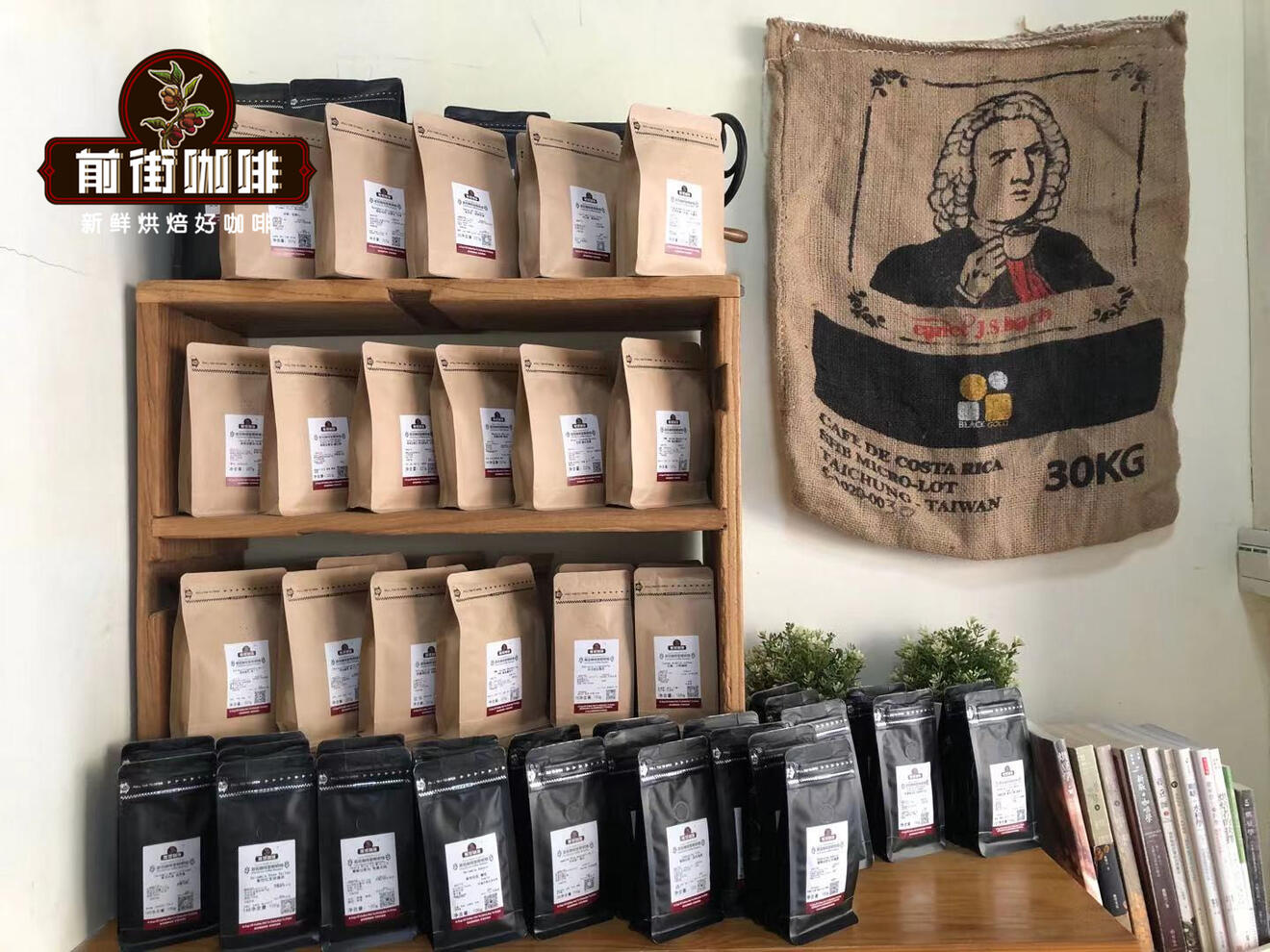
Professional coffee knowledge exchange More coffee bean information Please pay attention to coffee workshop (Weixin Official Accounts cafe_style)
Yemeni coffee varieties originated in Ethiopia and are now unique to Yemen itself. A long time ago, the first coffee to drink was actually Yemeni mocha, when mocha was mentioned, coffee came to mind. However, the number of Yemeni mocha is getting smaller and smaller now. Both the port and the planting area are in a state of war. Yemeni coffee in Front Street is the last batch of Yemeni coffee in China. It was shipped back through Germany when the port was still open in 2017. Since then, there has been no large number of Yemeni coffee. In 2019, a Yemeni brought a small amount of coffee to China for promotion, but the amount was very small. Even today, Yemeni mocha's venison coffee beans are still missed by friends on the front street. The complex flavors of red wine, wild flavor, dry fruit, berry and chocolate are fascinating.
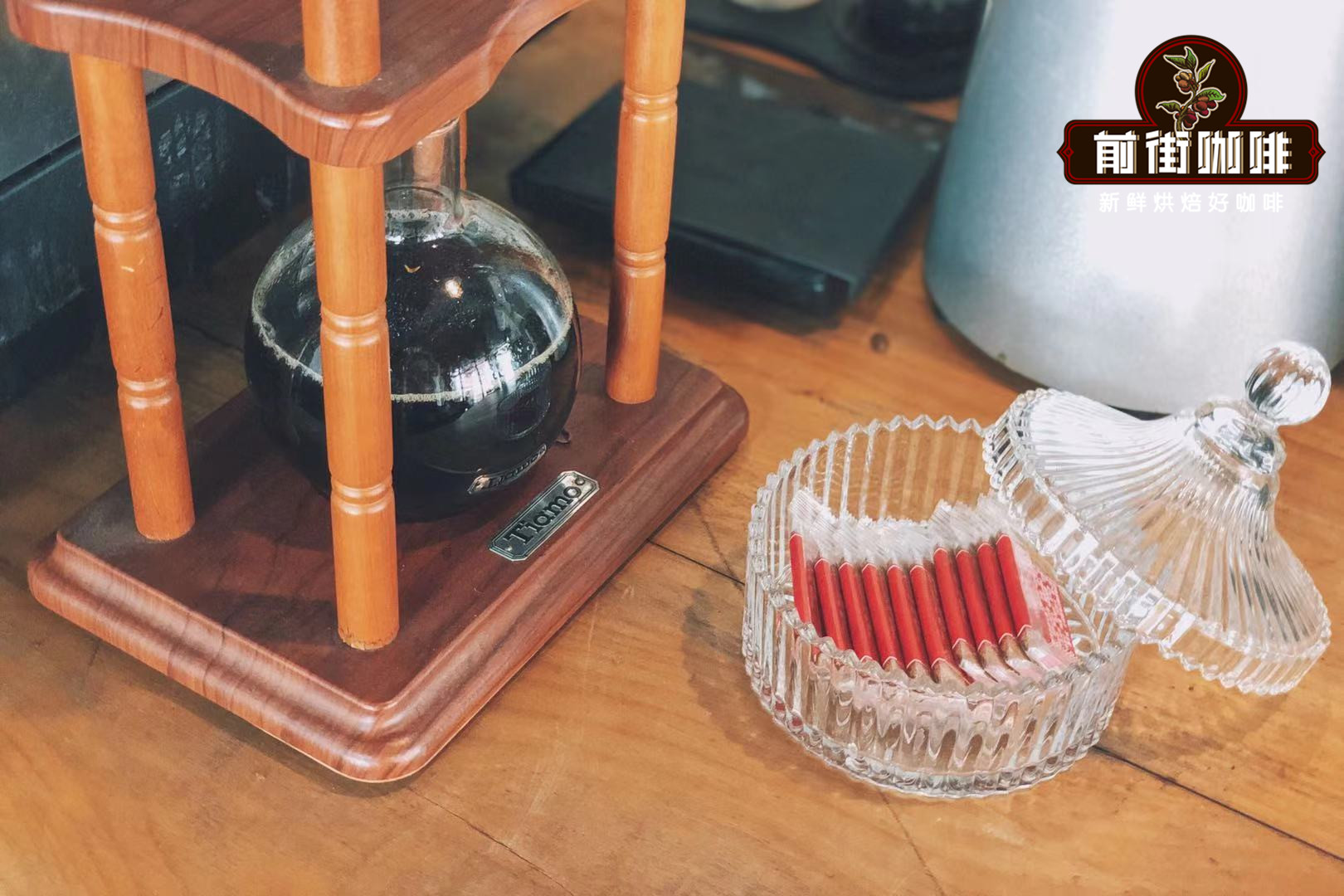
What is mocha coffee?
Madari is Yemen's most famous coffee bean, located in Bani Matari, west of the capital Sana'a, with a strong, thick flavor and a distinct berry aroma.
When it comes to Yemeni coffee, one must mention "mocha." We have all heard of mocha coffee. What exactly is mocha?
There are many answers to this question. Some people say mocha is a certain place of origin, and some people have the impression that mocha is sweet chocolate coffee. In fact, authentic mocha coffee is grown only in Yemen, southwest of the Arabian Peninsula, on steep mountain sides at altitudes of 3,000 to 8,000 feet, and is the oldest coffee in the world.
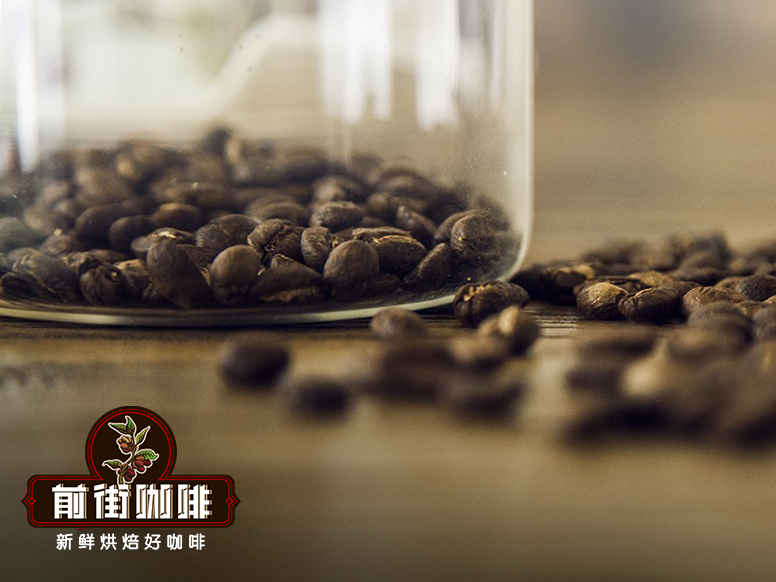
Meaning 1:
Coffee has been produced in Yemen for more than 500 years in an ancient way. At the beginning of the seventeenth century, the first batch of Yemeni coffee sold to Europe was exported through the ancient small port-"Mocha Port", which surprised Europeans and called the delicious coffee shipped from Mocha Port "Mocha Coffee", which is the origin of the name "Mocha Coffee".
Neighboring Ethiopia across the Red Sea also exports coffee through Mocha Port, so Ethiopian sun-cured coffee is often referred to as mocha. (Mocha-Ethiopia Harrar) Today, Mocha's old port has long been abandoned due to siltation (today's place name Al Makha), and it is exported from Hodeida port in the northwest. However, people have long been accustomed to the name of Mocha, and the name of Mocha is resounding in the sky.
Meaning 2:
Over time, some people started using mocha as a nickname for coffee. Later, because mocha coffee has a chocolate aftertaste, the word mocha coffee has been quoted as the name of coffee drinks mixed with chocolate.

Meaning 3:
Since 1933, Italian Alfonso Bialetti invented the first MokaPod, providing all families with a simple and convenient choice for brewing Italian coffee. As the first choice for brewing coffee at home, BIALETTI is the father of MokaPod.
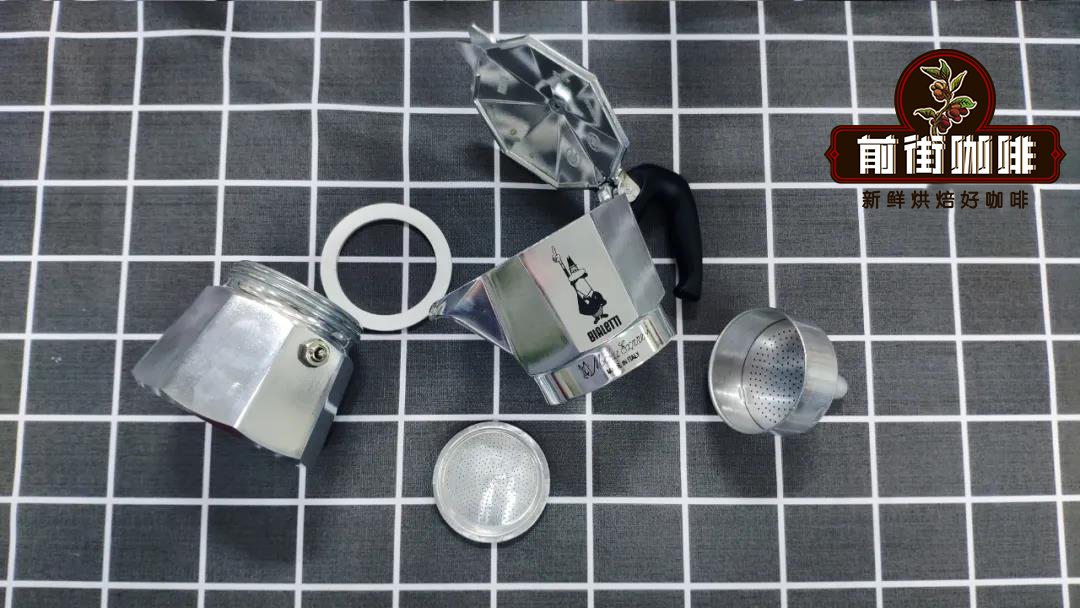
Thus, mocha coffee, which is the same as mocha, mocha beans, mocha pot and espresso coffee, represents three meanings.
Front Street Coffee finds deep-roasted Yemeni coffee often to have a chocolate-like caramel sweetness, so when you see the words "mocha coffee," it may refer to pure Yemeni coffee, or neighboring Ethiopian coffee, or simply mean it. In any case, only real Yemeni coffee qualifies as mocha coffee for picky coffee drinkers.
The word mocha has multiple spellings: Moka, Moca, and Mocca are common spellings, and there are as many as four local spellings seen in sacks and documents of Yemeni coffee: Mokha, Makha, Morkha, and Mukha, all of which mean the same thing.
Yemen mocha coffee
Yemeni mocha is the originator of the world coffee trade and has contributed to the promotion of delicious coffee to the world. In the seventeenth century it was called Arabia (hence the name Arabica!). Yemeni mocha came across the ocean to Italy and other European Catholic countries. For more than 150 years, Yemeni coffee has been the only coffee producing area sold to Europe.
In ancient times, conservative Catholic countries, extraordinary good things are often considered evil, once let coffee bear the inexplicable sin. It was not until the Vatican Pope, who also loved coffee, declared coffee a Catholic drink and blessed coffee drinkers that coffee began to spread widely in Europe. Although Ethiopia was the first country in the world to discover coffee, it was Yemen that allowed coffee to flourish.
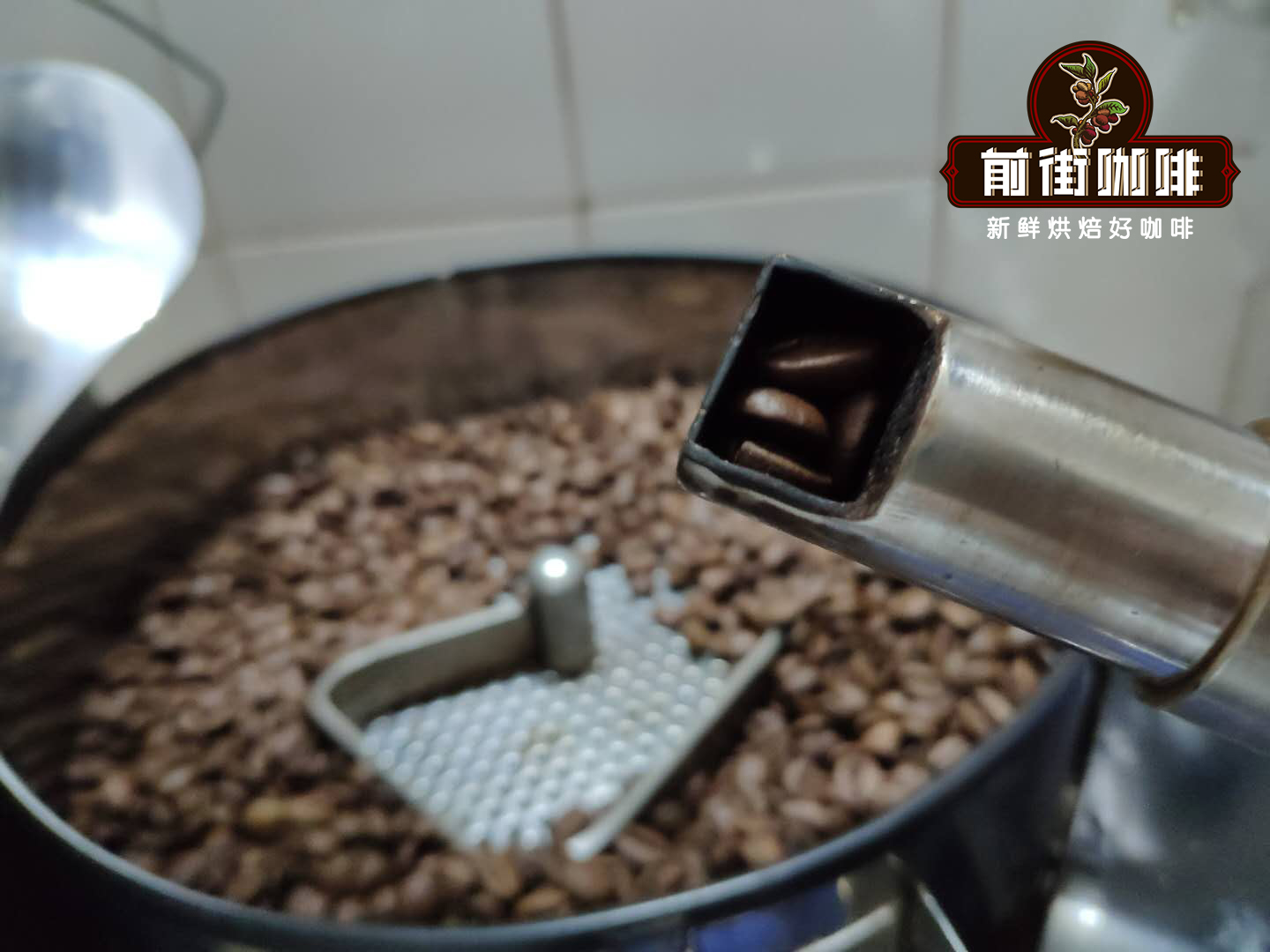
Coffee World's Last Living Historic Site
Yemeni coffee farmers still produce coffee the same way they did 500 years ago.
Coffee berries grow naturally on trees, without the use of artificial fertilizers or pesticides, and in summer they are watered by a small amount of rain and fog on the slopes, and in dry winter, mature coffee berries are allowed to hang on trees and dry naturally-a very unique and rare practice, because Arabia's extremely dry climate and intense sun allow this, and in other coffee producing areas, the same practice may cause coffee berries to rot on trees.
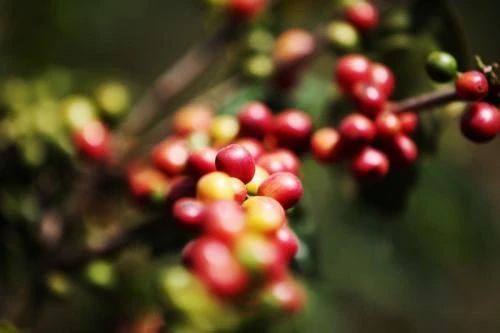
Ripe or dried coffee berries fall naturally from trees or are shaken or picked. Coffee farmers, who account for nearly a quarter of Yemen's population, sun their pulpy berries on rooftops, in front of huts, or even directly on dirt floors, exposed to harsh, dry winter sun. After the rind and pulp are dried, the beans are ground to remove the dried rind and pulp with an old-fashioned stone mill (two stones stacked one on top of the other).
There are still a few coffee farmers in Yemen who use animals (such as camels and donkeys) as a source of power for stone mills. Compared with Central and South American countries that use advanced machinery to process coffee beans in large quantities, or even neighboring Kenya with a short history of coffee, Yemen mocha is simply the only living monument in the coffee world! You know what? The Yemeni coffee you drink today is basically not much different from the Arabic coffee enjoyed by European aristocratic merchants hundreds of years ago in Venice, Italy, in San Marco Square, the oldest cafe in Europe.
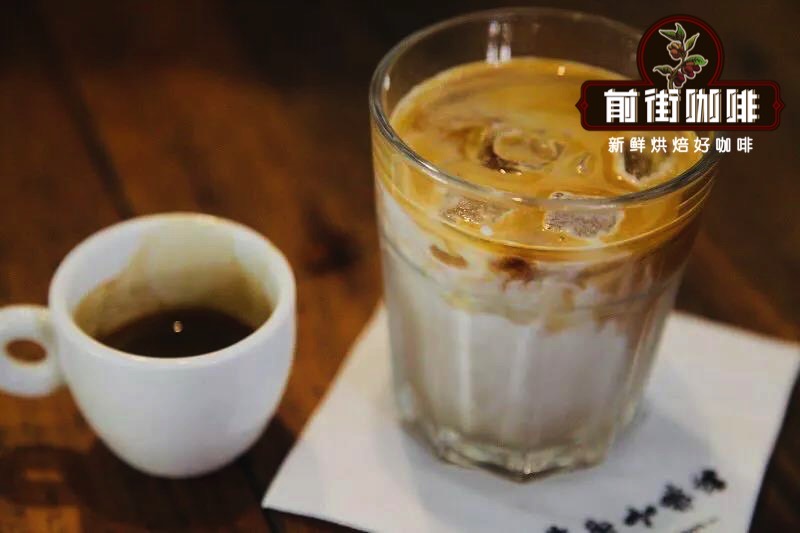
Yemeni coffee is treated entirely in natural sunlight, as opposed to most of the world's coffee-producing washing methods. The stone mill (crushed with two stones) dehulling process causes the broken beans to be mixed, resulting in an untidy appearance. Green beans are often mixed with twigs, pebbles and even dried insects (which are sifted out during baking). It also has some of the world's most unique, rich and fascinating complex smells: "red wine, wild, dried fruit, blueberry, grape, cinnamon, tobacco, sweet spice, log and even chocolate…" You can see all kinds of adjectives used to describe Yemeni mocha!
Because of the dried pulp, the flavor of the coffee berries has the opportunity to "penetrate" the coffee beans. When the coffee fruits fall on the dry soil of the African plateau, they will also absorb the flavor of the surrounding organic matter, plus the "sun flavor" imparted by the fierce winter sun in the Arabian Peninsula.(You can smell it on sun-dried quilts), ripe fruit fermented by the natural fermentation of the flesh, a touch of earth…300,000 coffee farms at altitudes ranging from 3000 to 8000 feet, and ancient, 100% organic processing methods make Yemeni mocha unique in the world.
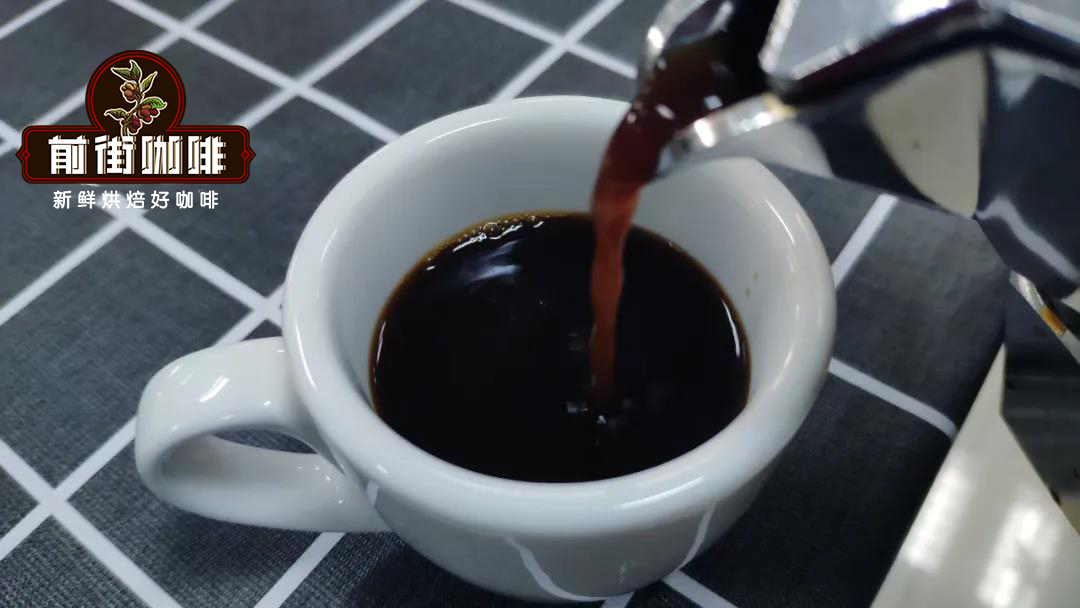
Yemen mocha coffee producing area
Among the common Yemeni mocha, Mokha Mattari is most famous. Martali, produced in Bani Matar (also known as Bany Mattar) province, is coffee grown at high altitudes, usually with good red wine aromas, dry fruit flavors, thick taste, deep roast and often chocolate caramel sweetness.
Due to the political instability in Yemen in recent years, production has dropped sharply, and mocha martali, the most famous coffee in the world, has become a target for watering down and has been mixed with lower-grade inferior beans. Today, even labeling as Madeline is not a guarantee of high quality. Good quality martali beans are small, raw beans have a sweet wine aroma and moderate ripe fruit fermentation flavor, excellent martali performance will never let coffee lovers disappointed!
Mokha San ani is a blend of beans from tens of thousands of small farms on the slopes near the capital San a. It is planted at a lower elevation than Martali, and generally tastes thinner and less acidic than Martali, but has a good fruity flavor, often with better ripe fruit and wild flavors than Martali. According to experience, the quality of Shanna varies greatly, sometimes with flat flavor, earthy smell, fermented taste of inferior products, careful cup test selection is coffee importers must do homework, absolutely not lazy.
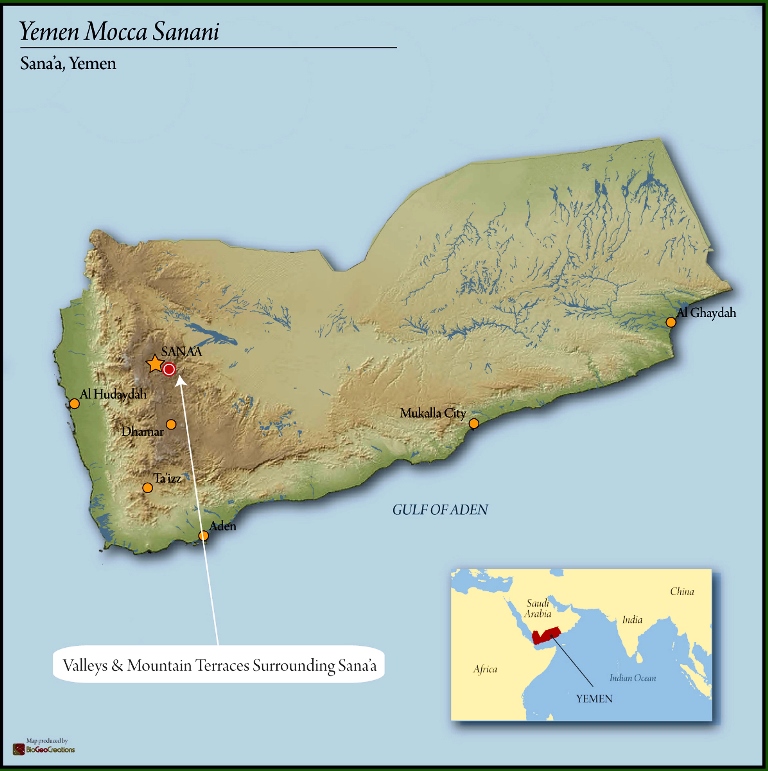
Mokha Ismaili is one of the traditional ancient tree species, planted at an altitude of more than 6500 feet, characterized by rounder beans, smaller beans than matali, thick taste, high complexity, and generally, often exceeding matali performance. This is the least produced and most expensive Yemeni mocha (Yemeni mocha is already not cheap). Mocha ismaili of excellent quality is produced in Hirazi district (although famous as Bani Matar, it is the best known growing area in Yemen). The mountain side of Hirazi district has a maximum altitude of 8000 feet!
Mokha Rimi is grown in the Djebel Remi (aka Raimi, Rayma) district and is similar in quality to Shanani. In my experience, Mokha Rimi is usually slightly fermented and occasionally has a surprisingly rich raisin sweetness. When roasted properly, the coffee beans smell like opening a bottle of rich jam.
Mokha Yafeh is produced in Yafeh (also known as Yaffe) province in the south of Yemen. It belongs to the rare Yemeni mocha, which is the only "southern taste" in Yemen. The output is also small. Almost all of them are sold to the neighboring United Arab Emirates. It is rarely seen in the fine coffee market.
A coffee expert once said: "Yemen mocha taste too diverse, not only different origin, different species, different batches have different, each sack, even each cup of flavor is different." Because of its complexity and variety, it is a challenge for coffee roasters to roast the best flavor of Yemeni mocha! Light baked fruit sweet, mild, warm sun fermentation flavor; deep baked to show the rich red wine fragrance, bitter sweet chocolate aftertaste, in the taste of repeated,"lingering, three days in the mouth." No wonder there are so many coffee lovers who list Yemeni mocha as their favorite!
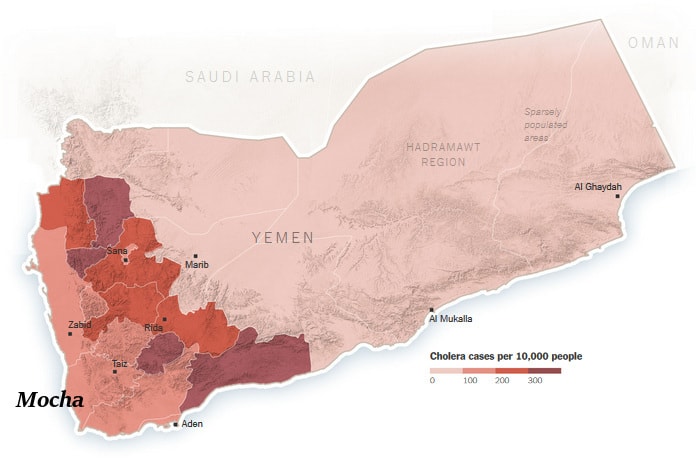
confusing naming
There is no universal standard for naming Yemeni coffee, nor is there an official grading system. Local residents have their own classification system, with hundreds of coffee codes and names for internal classification purposes, but for commercial markets (export use) coffee is not suitable. In the commercial market, Yemeni mocha is usually named in one of two ways: "place name" or "tree name."
Yemen Mokha Mattari and Yemen Mokha Sanani are "origin nomenclature", indicating that they are produced in Bani Matar province and the hillside area near the capital San a, respectively; Yemen Mokha Ismaili is "tree species nomenclature", and its production site is Hirazi, located southwest of Bani Matar.
Such a unique Yemeni coffee, Front Street Coffee recommends brewing with flannel! Share the parameters and flavor of Yemeni coffee brewed by Front Street Coffee.
Yemeni mocha matari coffee
Production area: Matari
Altitude: 1400 m
Breed: Iron pickup, Bourbon
Treatment: Solarization
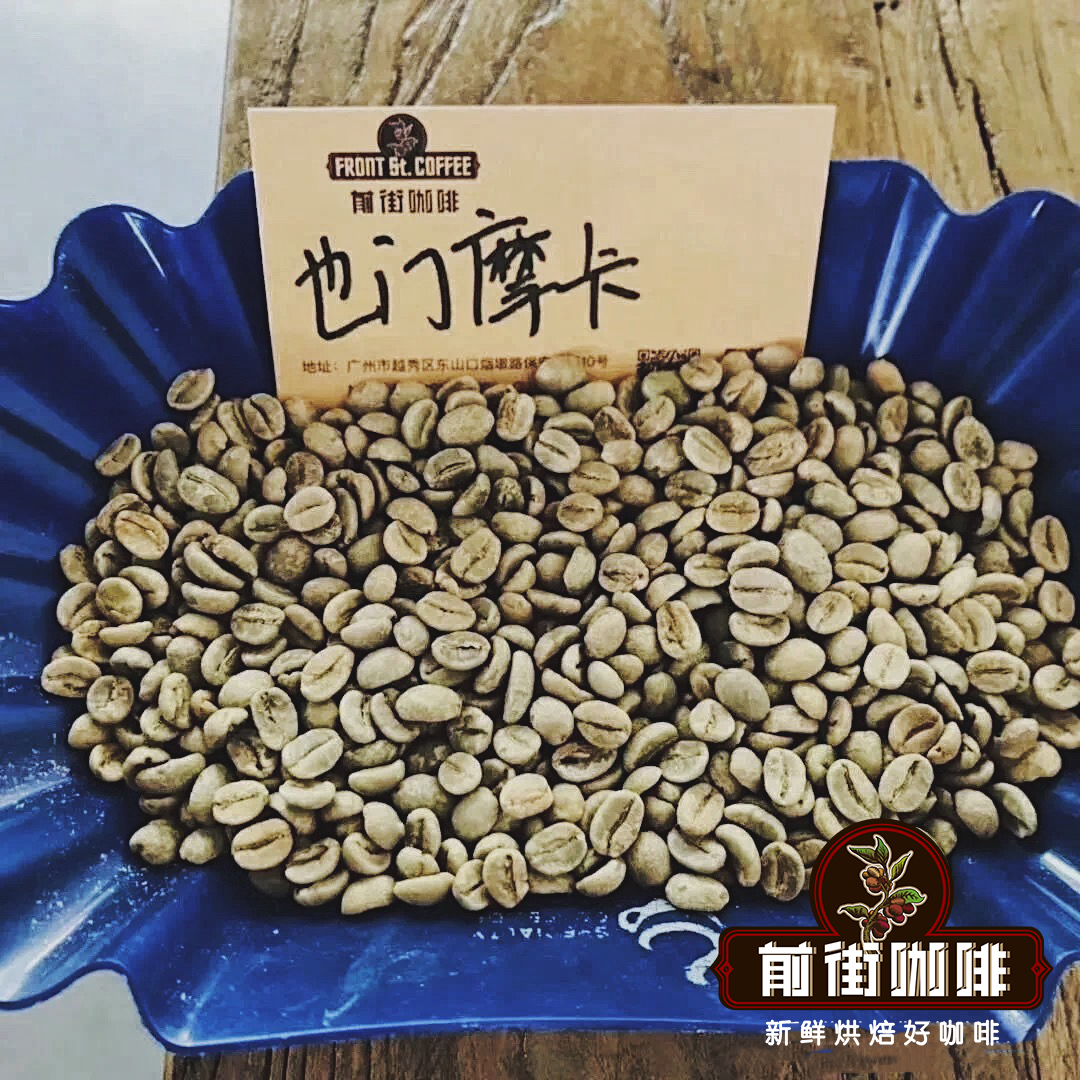
Baking advice
Yemen mocha belongs to raw beans with less water, and considering the different sizes of beans, the temperature of beans should not be too high. Front Street Coffee is medium roast.
Machine: Yangjia 800N, raw beans cast 550g
Bean temperature: 170℃
Yellowing point: 5 00", 147.2℃
First explosion point: 8 23", 183.3℃
2 ′ 20 ″ after explosion, 197.9℃
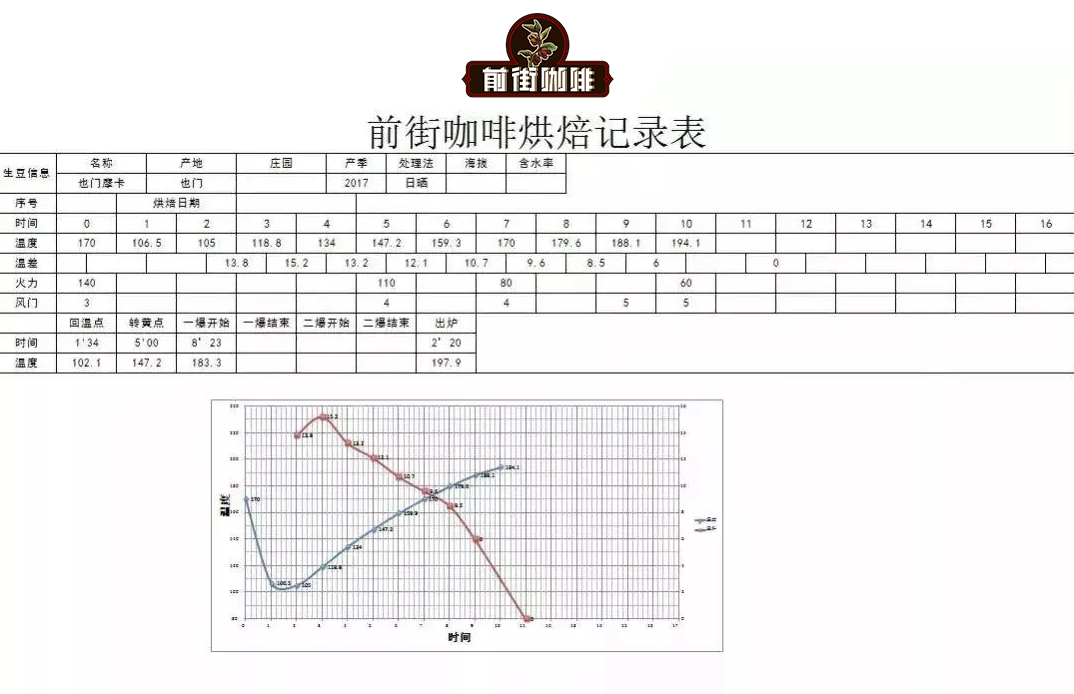
Yemeni mocha coffee drinking method recommended by Front Street Coffee
Recommended hand washing equipment: flannel
Flannel filter cloth, can carefully and slowly extract the delicious ingredients of coffee beans, filtered coffee has a round and deep taste, is the greatest charm of flannel filter cloth. Because flannel has larger pores than filter paper, it can retain some of the oil in coffee, unlike filter paper, which usually filters out all the oil, so the coffee washed with flannel will be more mellow and smoother than filter paper.
In addition, in the brewing process, because flannel pores are thicker and can be filtered at all positions below the water level, unlike filter paper that can only filter through the gap with the filter cup, flannel filtration speed is slightly faster than the general filter cup filter paper combination (flannel flow rate is different on both sides!)
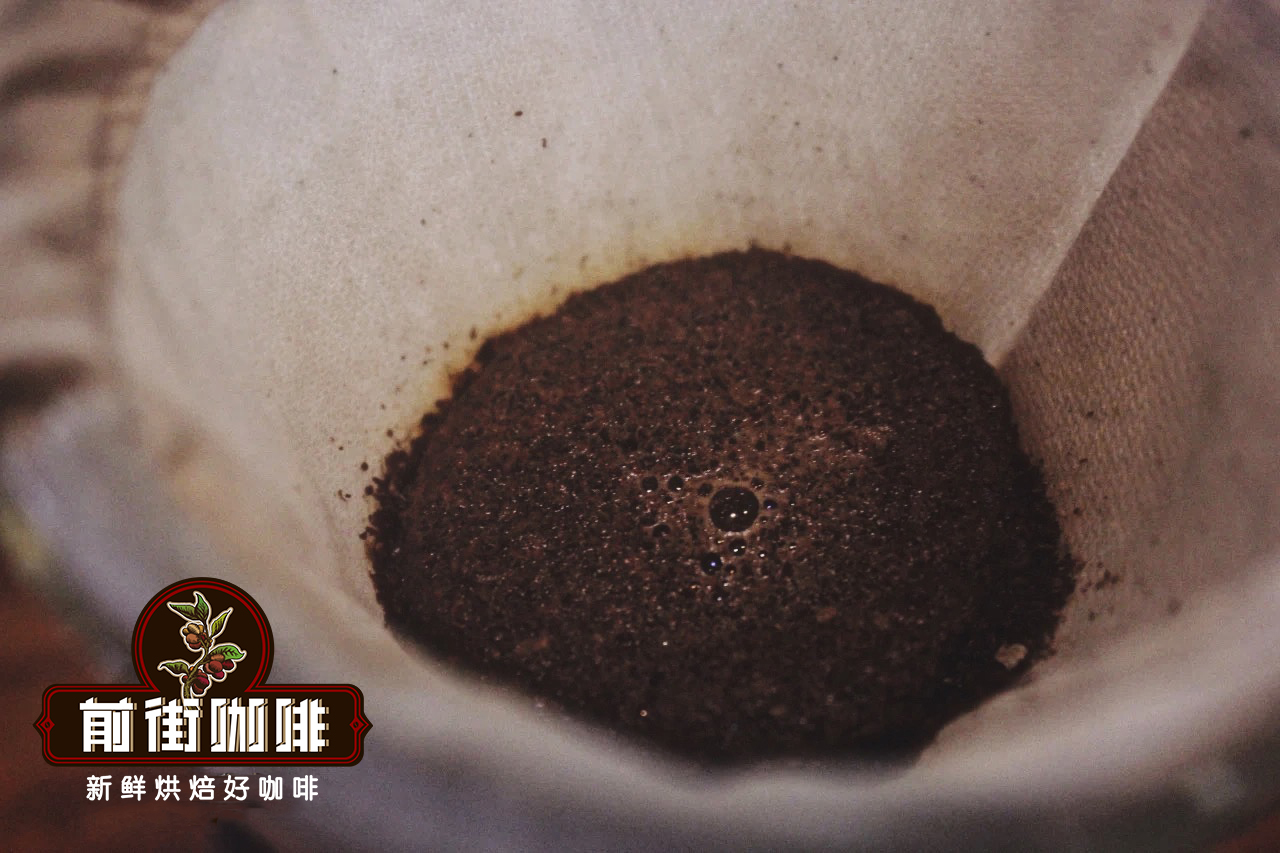
Parameters: grinding degree 5M (Chinese standard 20 sieve pass rate 70-75%), water temperature 88℃, powder water ratio 1:15, extraction minutes and thirty seconds.
Brewing method: 30 grams of water stewed for 30 seconds, water injection to 100 grams when the stage, such as the water level is about to expose the powder bed continue to water injection to 225 grams to end brewing.
Flavor: Full, smooth, intense dark chocolate, caramel lingering, slightly cold, spice and berry flavours
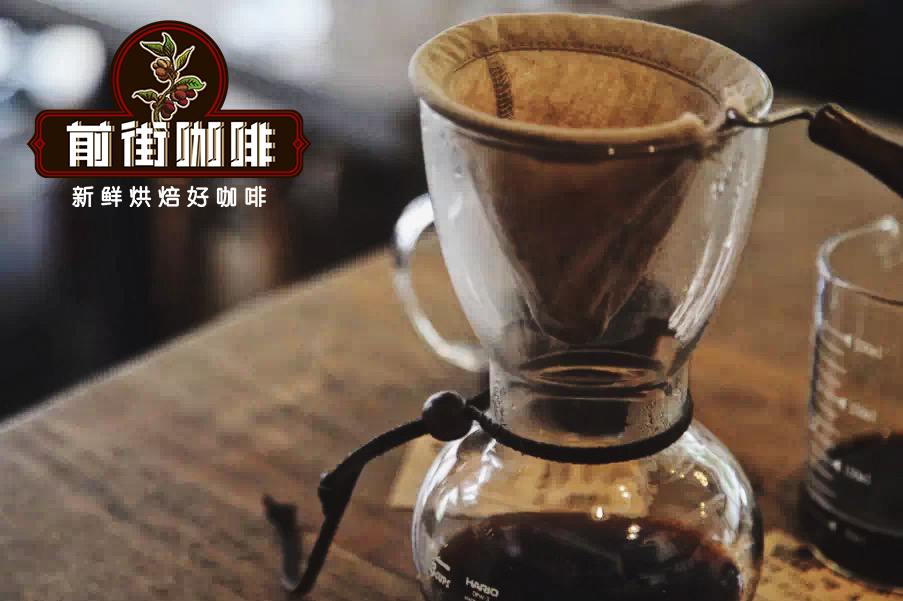
More fine coffee beans, please add private WeChat Qianjie Coffee, WeChat: kaixinguoguo0925
Important Notice :
前街咖啡 FrontStreet Coffee has moved to new addredd:
FrontStreet Coffee Address: 315,Donghua East Road,GuangZhou
Tel:020 38364473
- Prev
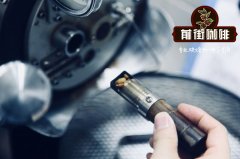
Indonesia Acimanin G1 plus Young Mountain Mantenin single Coffee beans recommended
Professional coffee knowledge exchange more coffee bean information please follow the coffee workshop (Wechat official account cafe_style) production area: Sumatra Gayo Mountain treatment: semi-washed grade: G1 variety: Arabica Sumatra northwestern tip of the GAYO Mountains there is a kind of washed coffee, called Gayo mountain is a group of Tibika variant trees, cleaner than Manning
- Next
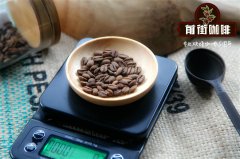
Aceh Manning Tiger Manning single Coffee beans recommended
Professional coffee knowledge exchange more coffee bean information please follow the coffee workshop (Wechat official account cafe_style) Ache Sumatra Tiger Mandheling Aceh Sumatran tiger Mantenin producing area: Aceh varieties: Caturra, Typica, Sidikalong soil: volcanic soil altitude: 1500m treatment method: wet planing method 01 | production area introduction Indonesia is a group
Related
- Detailed explanation of Jadeite planting Land in Panamanian Jadeite Manor introduction to the grading system of Jadeite competitive bidding, Red bid, Green bid and Rose Summer
- Story of Coffee planting in Brenka region of Costa Rica Stonehenge Manor anaerobic heavy honey treatment of flavor mouth
- What's on the barrel of Blue Mountain Coffee beans?
- Can American coffee also pull flowers? How to use hot American style to pull out a good-looking pattern?
- Can you make a cold extract with coffee beans? What is the right proportion for cold-extracted coffee formula?
- Indonesian PWN Gold Mandrine Coffee Origin Features Flavor How to Chong? Mandolin coffee is American.
- A brief introduction to the flavor characteristics of Brazilian yellow bourbon coffee beans
- What is the effect of different water quality on the flavor of cold-extracted coffee? What kind of water is best for brewing coffee?
- Why do you think of Rose Summer whenever you mention Panamanian coffee?
- Introduction to the characteristics of authentic blue mountain coffee bean producing areas? What is the CIB Coffee Authority in Jamaica?

